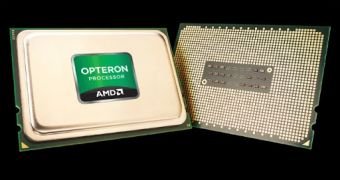Wishing to make server deployment both simpler and faster, Advanced Micro Devices spent the past year thinking of how to make it possible to run every server application on the barest minimum of hardware.
The result was the Open 3.0 platform, which emulates LEGO in the way it acts as a universal building block, of sorts.
The framework takes a basic motherboard, albeit one with two CPU sockets, and outfits it with two Opteron 6300 central processing units (CPUs).
Using this as the base of the default rackmount server, system and infrastructure builders can scale things to whatever level they require.
A single rack stack might be enough for an office floor, while a large room full of servers such as that could become the main connectivity and storage hub of an entire building.
Overall, the Open 3.0 server platform is not as flexible and decentralized as Intel's Photonic architecture, which we will see to later, but more practical, as it does away with the “one size fits all” idea.
"This is a realization of the Open Compute Project's mission of 'hacking conventional computing infrastructure,'" said Frank Frankovsky, chairman of the Open Compute Foundation and VP of hardware design and supply chain at Facebook.
"What's really exciting for me here is the way the Open Compute Project inspired AMD and specific consumers to collaboratively bring our 'vanity-free' design philosophy to a motherboard that suited their exact needs."
For those that want specifics, Open 3.0 offers up to 24 memory slots, six SATA ports for storage and up to four PCI Express slots, but no built-in connectors for custom components. Instead, a mezzanine link is included, which will allow only the necessary ones to be added.
Sales should start before March, but some companies have already gained access to the new hardware.

 14 DAY TRIAL //
14 DAY TRIAL //